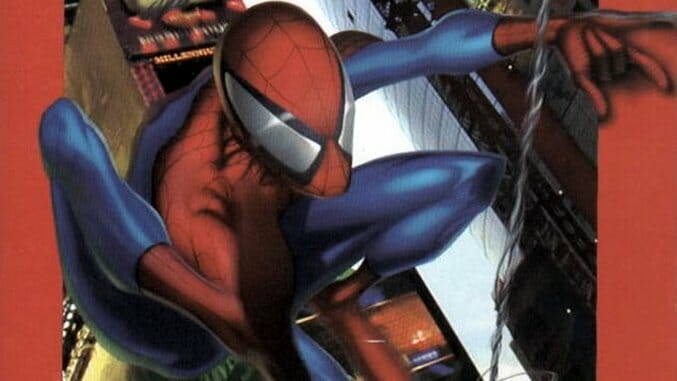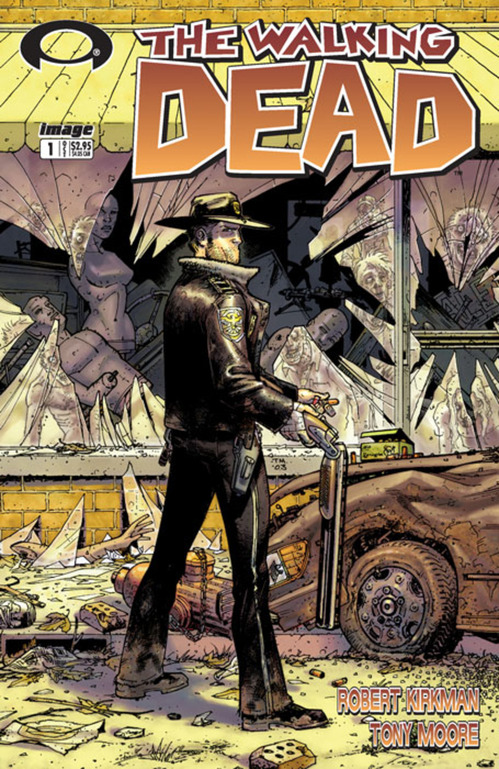
At the turn of the 21st century, Marvel Comics unveiled a modern reimagining of its fictional universe in the Ultimate Comics line, a retelling of its classic stories in a modern context. Though many of the writers involved in the endeavor—including Ultimate Spider-Man’s Brian Michael Bendis—had been working to establish themselves on indie projects, Ultimate Comics was the publishing line that launched them into the mainstream stratosphere. Grant Morrison, a sci-fi specialist who had veered into psychedelic and philosophical extremes, was also breaking costumed ground with New X-Men. Scribe Warren Ellis, who had been writing the speculative political gamechanger Transmetropolitan since 1997, found himself on the road to comic stardom as well, segueing from biting mature-readers work to runs on Wolverine and a host of Ultimate miniseries. Meanwhile at competitor DC Comics, a young writer named Geoff Johns was getting started on a book called JSA, a comic that elevated legacy and side characters with humanity and heart.
These authors all proceeded to become the superstars of superhero comics, shifting the zeitgeist from the extreme, artist-focused ethos of the ‘90s under figures like Rob Liefeld and Todd McFarlane to the “Age of the Writer.” In 2010, Marvel would go so far as to knight a new faction of A-list writers, formally establishing them as the drivers of a greater Marvel vision. Enter Matt Fraction (Uncanny X-Men, Hawkeye), Jonathan Hickman (Fantastic Four, Secret Wars), Ed Brubaker (Captain America, The Immortal Iron Fist) and Jason Aaron (Wolverine and the X-Men, The Mighty Thor). These were Marvel’s “Architects.”

Ultimate Spider-Man #1 Cover Art by Joe Quesada
The better part of a decade has since elapsed and the big question is: whatever happened to the superhero writers of tomorrow? In terms of both critical and financial impact, the current slate of scribes serving Marvel’s interests is nowhere near the levels of their forebears. While not to discount many, many creative and interesting efforts, move the needle the current generation has not.
To attempt to answer why the current comics ecosystem hasn’t witnessed the ambition of decades previous, we should look at some of the factors that contribute to a writer’s ascendancy from obscurity to marquee billing on a cape comic. What do the most successful scribes have in common with one another? Is it simply sheer talent? Is it the business acumen and social media sway that comic writers are expected to have when marketing themselves and their work? Is it just cold, hard sales data? All of these components do indeed play a role. But after that new wave of writers arrived (Bendis, Millar and company), these factors alone were not enough to situate the next crop of scribes.
When looking back at the careers of the Marvel Architects, two unique factors arise that seem inextricably linked to their nomination into the canon. First, these creators got their start working on critically acclaimed long-form projects at smaller publishers or imprints. Think Fraction’s pop-art epic, Casanova, Aaron’s reservation noir Scalped or Brubaker’s genre-bending crime saga, Sleeper. Second, they were given the opportunity to leave an indelible mark on a major character (or as indelible as you can get for superheroes), or at least raise the profile of that character in a significant way—Fraction’s Invincible Iron Man, Aaron’s Wolverine and Brubaker’s Captain America all expanded the characters in new and often controversial directions. Together, these one-two punches gave these writers and writers like them a boost into public consciousness.

Invincible Iron Man Cover Art by Salvador Larroca
But who’s revolutionizing mainstream superheroes now? DC’s fared well with classic story arcs from Scott Snyder. Tom King’s successes on miniseries like Vision and Sheriff of Babylon also cannot be ignored. G. Willow Wilson has used the legacy of Ms. Marvel for a new Muslim character, Kamala Khan, expanding audiences for the entire medium.
But, as a whole, where’s the flood of eager mythmakers in mainstream superheroes today?
The industry is vastly different than it was 10 years ago, and 10 years before that. The rise of creator-owned comics, accomplished through publishers like Image Comics and Dark Horse, clearly plays a huge role in this sea change—or lack thereof. The potential success from a creator-owned comic is a much more appealing prospect than curating your own Deadpool epic. Robert Kirkman, creator of The Walking Dead and Invincible, is a millionaire many, many times over and well known within and—more importantly—outside of the comics industry. If he so chooses (and he has) to never write a Big Two comic again, that decision wouldn’t make a dent in his finances or diminish the admiration that thousands of comic-book readers and television viewers have for the man. Mark Millar just sold the film IPs of his entire company, Millarworld, to Netflix, after several of his books were translated into big hits at the box office, including Kick-Ass and Kingsman: The Secret Service. When faced with the possibility of owning your ideas instead of selling them for a (relative) pittance, the choice seems obvious.
But even if this weren’t the case, even if creators weren’t flocking to creator-owned publishers to tell their stories and build their careers, is anyone at Marvel or DC even looking for the next group of writers to cultivate into superstars? Marvel’s talent outreach is well known within the industry for its scope and ability to attract top artists from around the world. But there is no specific team to attract and retain writers. That job falls to the individual editors, instead of one person with a vision to guide the editorial department. Will recent exclusive hires like Matthew Rosenberg, Donny Cates and Ed Brisson be given the freedom to leave their mark on Marvel IP?

The Walking Dead Cover Art by Tony Moore
For DC Comics, the problem is much the same, with the added detriment of having to rebuild the entire universe in the fallout of the New 52 and pay service to ongoing plot threads integrating the Watchmen characters into the DCU proper. Although the company’s output now seems to be at the beginning of an upswing in overall quality, we have yet to see much in the way of heavy hitters emerging from the writing side of things; even Tom King’s Batman run has been met with a more mixed reception than his previous projects.
Let’s not forget the draw of other media to upstart storytellers. Animation, games, television, film—the jobs in these fields, if they can be found, yield much more of a reward than the standard page rate at Marvel or DC. But the benefits go beyond simple financial gain. The audiences for these forms of entertainment are much larger and much less insular than the comic-reading audience.
This isn’t to say that good writers don’t exist at the Big Two. They do. It’s just harder to imagine them ascending the way their predecessors, or rising YA stars Raina Telgemeier or Victoria Jamieson, have. It’s hard to imagine another crop of writers molding the Marvel and DC universes into something unique and timely, assuming the companies would even allow for that anymore. It’s hard to imagine singular voices finding a place at the Big Two when they could just as easily find their place at Image Comics or AMC or, if they’re lucky enough, the silver screen.